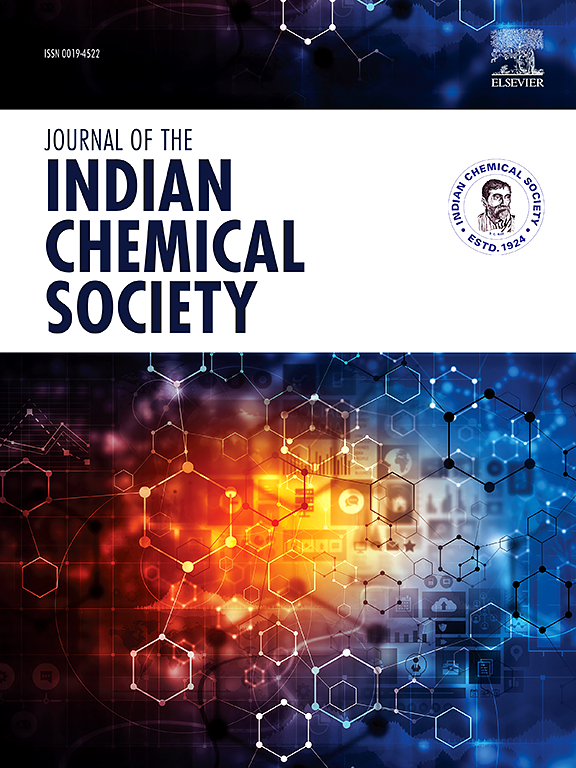Methyl Orange Dye degradation of dual doped TiO2 nanoparticles under visible light Irradiation
IF 3.2
4区 化学
Q2 CHEMISTRY, MULTIDISCIPLINARY
引用次数: 0
Abstract
Zirconium (Zr) and phosphorus (P) co-doped TiO2 nanoparticles were synthesized using a sol-gel technique, to improve the photocatalytic degradation of Methyl Orange dye under visible light. UV–visible spectroscopy, Fourier transform infrared spectroscopy (FTIR), and X-ray diffraction (XRD) were used to characterise the structural and optical characteristics. TPZr6 (0.25 wt% Zr, 1 wt% P) had the smallest crystallite size (3.06 nm), and XRD verified the anatase phase in all samples. Because there were no notable new chemical bonds found by FTIR, the structure was stable. According to UV–visible spectroscopy, TPZr6 had a smaller band gap (2.01 eV) than undoped TiO2 (3.2 eV), which allowed for effective absorption of visible light. With a rate constant of 0.0303 min−1, photocatalytic tests showed that TPZr6 outperformed undoped and other doped samples (TPZr1–TPZr5) in achieving 93 % degradation of Methyl Orange in 48 min. The optimised band gap, decreased electron-hole recombination, and large surface area of TPZr6 are responsible for its improved performance. The stability of TPZr6 across five cycles with little loss of efficiency was validated by recycling testing. These results demonstrate that Zr/P co-doped TiO2, in particular TPZr6, is a very effective photocatalyst for wastewater treatment dye degradation.

可见光照射下双掺杂TiO2纳米颗粒降解甲基橙染料的研究
采用溶胶-凝胶法制备了锆(Zr)和磷(P)共掺杂TiO2纳米粒子,提高了甲基橙染料在可见光下的光催化降解性能。利用紫外-可见光谱、傅里叶变换红外光谱(FTIR)和x射线衍射(XRD)对其结构和光学特性进行了表征。TPZr6 (0.25 wt% Zr, 1 wt% P)晶粒尺寸最小(3.06 nm), XRD证实所有样品均为锐钛矿相。由于FTIR没有发现明显的新化学键,因此结构稳定。紫外可见光谱结果表明,TPZr6比未掺杂的TiO2 (3.2 eV)具有更小的带隙(2.01 eV),能够有效吸收可见光。在0.0303 min−1的光催化速率下,TPZr6在48 min内对甲基橙的降解率达到93%,优于未掺杂和其他掺杂样品(TPZr1-TPZr5)。优化的带隙、减少的电子空穴复合和较大的比表面积是TPZr6性能提高的原因。通过循环试验验证了TPZr6在5个循环过程中的稳定性和效率损失。这些结果表明,Zr/P共掺杂TiO2,特别是TPZr6,是一种非常有效的废水处理染料降解光催化剂。
本文章由计算机程序翻译,如有差异,请以英文原文为准。
求助全文
约1分钟内获得全文
求助全文
来源期刊
CiteScore
3.50
自引率
7.70%
发文量
492
审稿时长
3-8 weeks
期刊介绍:
The Journal of the Indian Chemical Society publishes original, fundamental, theorical, experimental research work of highest quality in all areas of chemistry, biochemistry, medicinal chemistry, electrochemistry, agrochemistry, chemical engineering and technology, food chemistry, environmental chemistry, etc.

 求助内容:
求助内容: 应助结果提醒方式:
应助结果提醒方式:


